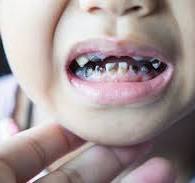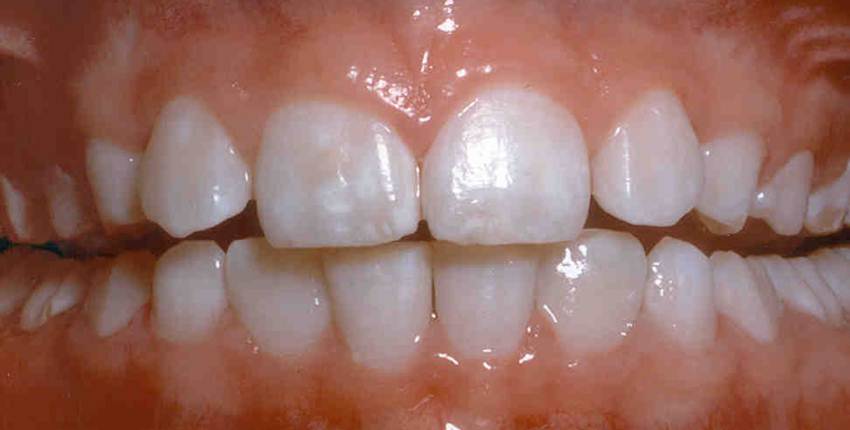Enter your email to receive the CareQuest newsletter:
Fluoride: Top 10 Questions Parents Ask
This resource, developed in collaboration with the American Fluoridation Society, provides answers to some of the most common questions parents ask about fluoride and fluoridation.

What is fluoride, and what is it used for?
The National Institutes of Health identifies fluoride as a mineral. Decades of research show that fluoride strengthens the enamel coating of teeth, helping to protect it from cavities. Cavities are caused by a disease known as “tooth decay.” And tooth decay is the most common chronic disease of children.

Children with tooth decay are more likely to miss school, receive lower grades, and need general anesthesia to treat severe cavities.
So the benefit of fluoridated water is that it helps to prevent cavities, right?
In water and all other forms, fluoride lowers the risk of cavities. But the benefits go much further than that.
By preventing cavities, fluoridated water helps children avoid the negative things that come from having unhealthy teeth. Untreated cavities can cause pain and infections that may lead to problems eating, speaking, and learning. Children with unhealthy teeth are at a disadvantage in school. A child with recent tooth pain is three times more likely to be absent from school. And a child with recent tooth pain is four times more likely to receive lower grades.
I understand the benefit of brushing teeth with a toothpaste that contains fluoride. But how does it help a child to swallow fluoride from a glass of water?
Good question. The swallowed fluoride is naturally drawn to bones and teeth — even while a child’s teeth are just starting to form. Fluoride makes a new tooth stronger and better able to resist a cavity once it appears in the mouth. This video shows you how this happens.
Does fluoridated water also benefit adults?
Yes. Research shows that drinking fluoridated water also benefits adults. This is very good news. As more and more communities have offered fluoridated water, older adults are more likely to keep their natural teeth. Many adults take medications that can cause “dry mouth,” and this raises the risk for cavities. This is why adults — like children — can protect their teeth by drinking fluoridated water and using fluoridated toothpaste.
Has any community started water fluoridation and then stopped? If so, what happened — did cavities increase?
Yes, studies have been done in several cities that stopped water fluoridation. Calgary, one of the largest cities in Canada, stopped fluoridation in 2011. Years later, the cavity rate of Calgary children jumped, rising above the rate in Edmonton — another city that was fluoridated. When children suffer severe cavities in several teeth, they must be treated under general anesthesia (GA). After Calgary ended fluoridation, its GA treatment rate was 88% higher than the rate in Edmonton. The city council in Calgary was so alarmed at how dental health had worsened that it voted to resume fluoridation.
Windsor, a Canadian city across the border from Detroit, also learned a tough lesson. In Windsor, the city council stopped fluoridation in 2013. Five years later, a local health official gave the council some very bad news — the number of children with urgent dental needs had jumped by 51%. This led the council to reverse its decision and resume fluoridation.
If my family brushes with fluoride toothpaste, does that mean we don’t need to drink tap water that is fluoridated?
Fluoride in toothpaste and water work together, much like the seatbelts and air bags in a car. The Centers for Disease Control and Prevention says “the two [fluoride] sources offer more protection than using either one alone.”
Some Canadian parents (see previous question) felt that fluoride toothpaste would substitute for the loss of fluoridated water. But many of them learned the hard way that losing access to fluoridated water harmed their children’s teeth.
I read somewhere about a report that linked fluoride to lower IQ scores. The report was written by a group called the NTP. What about that report?
That fluoride report came from the National Toxicology Program (NTP). The NTP’s report said it found an association between fluoride and lower IQ scores. But there are many key facts that parents should know about the NTP report:
- None of the NTP’s studies come from the United States. Most of them were done in China, India, or Iran. A child’s IQ score can be affected by many different things. It isn’t clear whether these foreign studies looked at the lead, arsenic, or other chemicals that children were exposed to. Lead exposure is a major problem in China.
- The NTP found a link to IQ scores when the amount of fluoride was higher than 1.5 mg/L. That is more than double the amount of fluoride found in fluoridated water in the United States. In other words, the NTP’s findings do not apply to fluoridated water.
- It was found that 70% of the studies in NTP’s meta-analysis had a high risk of bias. Most of the studies with a low risk of bias found no link at all between fluoride and IQ scores.
Parents cannot trust the NTP report. It has too many flaws.
Some people say that water fluoridation takes away their choice. Should personal choice be considered by a community?
Freedom of choice is important, but we sometimes place limits on it to protect the public’s health and safety. For example, states have laws that make it illegal to use a cell phone while driving a car or truck. Finding the right balance is important.
When we discuss “choice,” we should think about it broadly — not just about the choice of adults. Children do not choose the household they grow up in or how much money their parents have. They do not choose how often they can go to the dentist. Children do not choose whether their parents have dental insurance. This lack of choice means that children’s dental health is mostly out of their control. Many communities realize this, and they see fluoridation as a way to give every child a basic form of prevention.
One of our city council members said the city would save money by ending water fluoridation. Is that true?
It might lower the city’s water budget a little bit, but this would pass higher dental care costs onto families. Here’s why — losing fluoridation would lead to an increase in cavities. More children would need fillings or other costly treatments. In fact, this is what has happened in the United States and in Canada after a few cities ended fluoridation.
Many families are living paycheck to paycheck. It creates a crisis when they suddenly must pay a medical or dental bill they were not expecting.
What is dental fluorosis? As a parent, is that something I need to worry about?
Dental fluorosis is a change in the appearance of the tooth enamel. When teeth have fluorosis, faint white flecks or spots appear on the enamel. These spots usually aren’t visible to that person or to their friends and family. Often these spots aren’t seen until a dental professional looks closely into the mouth with special lighting.
Fluorosis does not cause pain, and it does not affect the health or the function of teeth. In the United States, nearly all fluorosis is mild — not easy for people to notice.
Fluorosis happens when a child consumes too much fluoride during the tooth-forming years. After age 8, children cannot get teeth with fluorosis. Usually, fluorosis occurs because a young child repeatedly swallows fluoride toothpaste. This is why parents are encouraged to be in the bathroom when children put toothpaste on their brush. Parents should remind their children to spit out any extra toothpaste that is in their mouth.
There is a silver lining — teeth with fluorosis are at lower risk of getting cavities. Also, research shows that as a child grows into an adult, the fluorosis on their teeth becomes even less noticeable than before.

